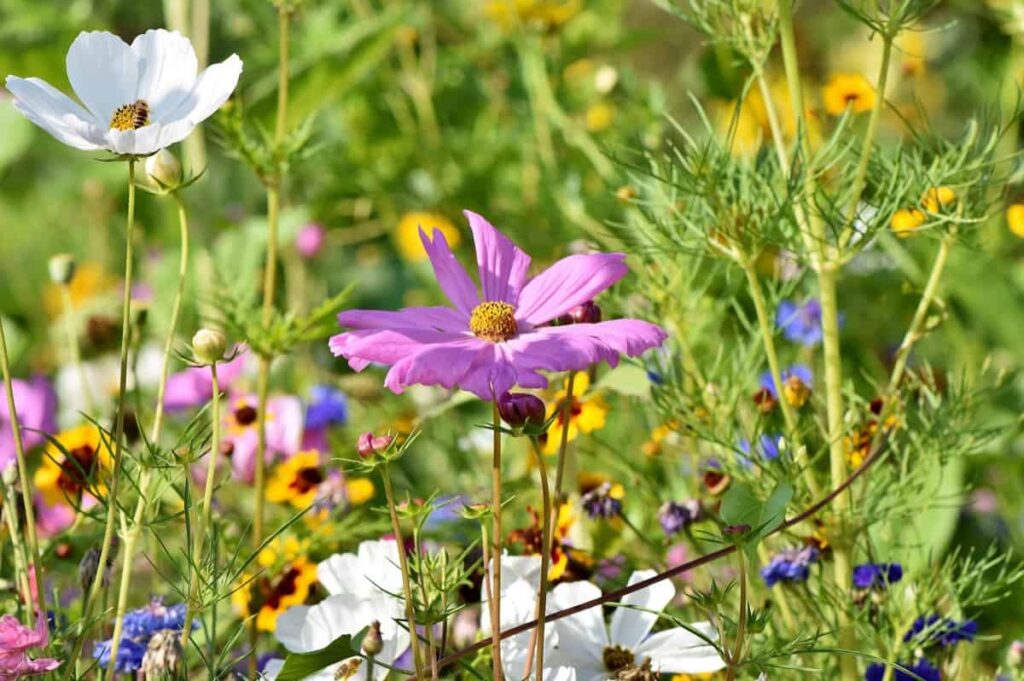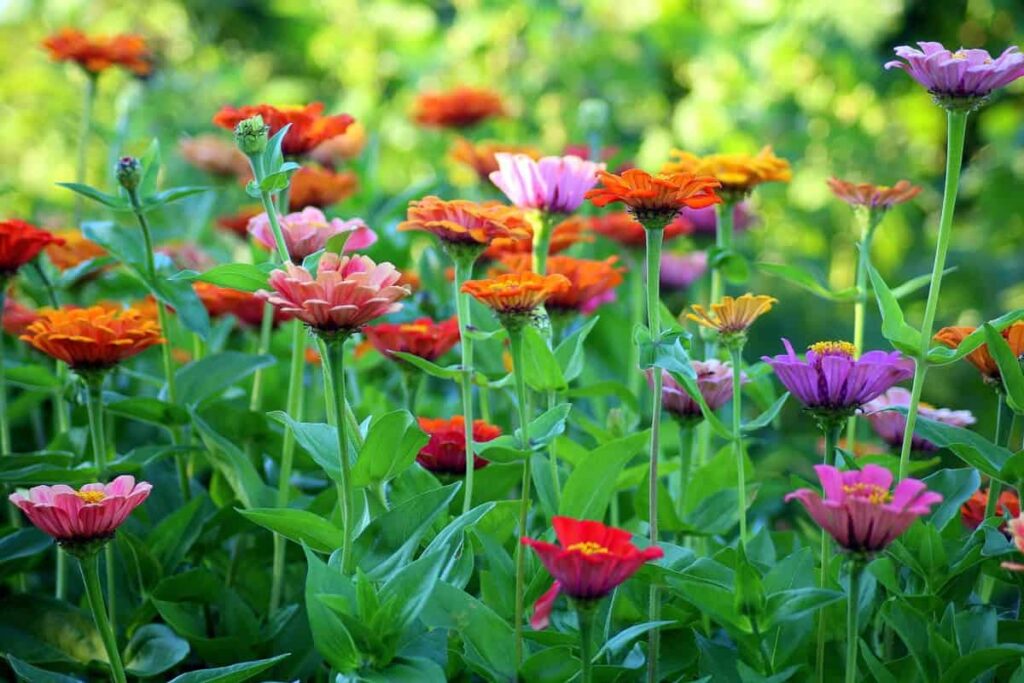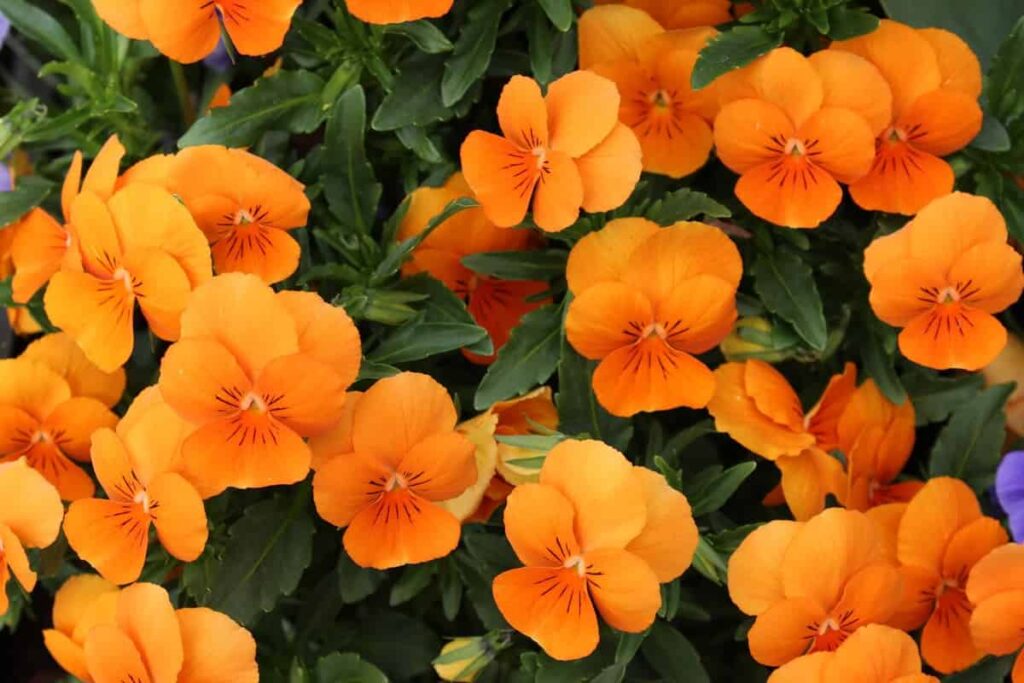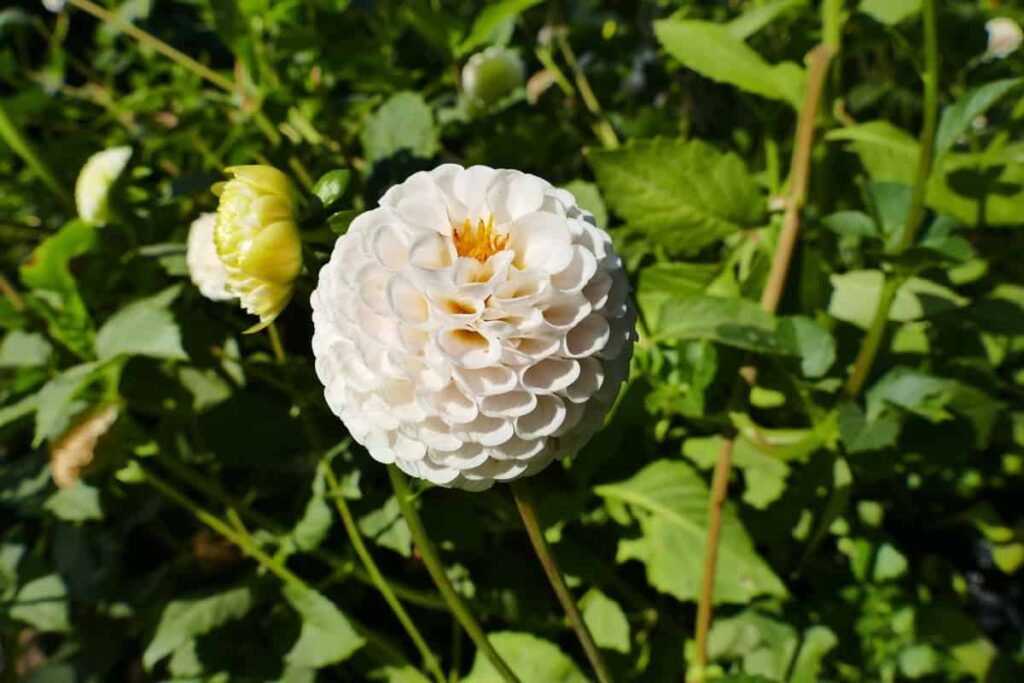Spring is the perfect time to start thinking about your garden and what you want to plant. But if you’re looking for flowers that come back year after year with little effort, then you need to know about self-seeding flowers. Self-seeding flowers are exactly what they sound like—flowers that will reseed themselves so that you don’t have to do it.
And while there are plenty of benefits to this, the best part is that it means you can have a beautiful backyard with very little work. This blog post will explore 14 self-seeding flowers that will effortlessly cover your backyard. From annuals to perennials, there’s sure to be something here that will suit your needs. So read on and get ready to enjoy a low-maintenance garden this spring!
14 Self-seeding flowers
15 Self-Seeding Flowers There are many reasons to love self-seeding flowers. They are often very low-maintenance plants once they are established. They will also often come back year-after-year, providing you with a beautiful display without work. Some of the best self-seeding flowers include:
Cosmos
Many flowers self-seed, but the cosmos is one of the easiest to grow from seed. You can sow cosmos seeds indoors in late winter, early spring, or after the last frost. The seeds will germinate in 10 to14 days at a temperature of 18 to 21°C. Once they have germinated, Cosmos seedlings can be transplanted into individual pots and grown until large enough to plant out in the garden.
In case you missed it: Growing Cosmos From Seed – Planting Guide

To sow cosmos seeds indoors:
- You will need good quality seed compost to fill a seed tray or pot and firm down gently.
- Sprinkle your seed evenly over the surface of the compost on the surface of the compost and need to cover them with a fine layer of vermiculite or grit—water well and place them in a warm, light position such as a windowsill or greenhouse.
- Keep the compost moist but not waterlogged; the seeds should start germinating within 10 to 14 days.
Once they have germinated, thin out the seedlings to grow about 5 cm apart. Transplant them into 7.5 to 10 cm pots filled with good quality potting compost when they have their first true leaves. Grow Cosmos seedlings in a warm, light position and water them regularly so that the compost doesn’t dry out. Harden off your Cosmos plants for ten to fourteen days before planting them into their final positions in late spring or early summer.
Zinnias
Zinnia self-seeding flower, is an annual flower that blooms in late summer and early fall. These plants grow about 2 feet tall and will spread of 1 to 2 feet. The flowers are white, pink, or purple and have a yellow center. The leaves are green and lance-shaped. Zinnia plants prefer full sun but will tolerate some shade. It is drought tolerant and does not need much water once established. Zinnia self-seeding flower is an easy plant to grow and is good for beginners. It is also suitable for cutting and can be used in bouquets or arrangements.
In case you missed it: Growing Zinnia Flowers Indoors from Seed, and Cuttings

Marigolds
As their name suggests, marigolds self-seed readily and at the end of the flowering season, if you allow them go to seed, you’ll have plenty of new plants to grow the following year. The best options are to let them go to seed, then cut back the plants in early autumn. This encourages a new growth from the roots. You require sowing the seeds flower in late autumn or early winter.
They usually germinate within a few weeks and flower in late spring or early summer. Be sure to thin out the seedlings if they become too crowded. You can also start marigolds from seed indoors in late winter or early spring. Sow the seeds on the surface of good quality seed compost and cover them with a fine layer of vermiculite or fine grit. Keep the compost moist but not wet, and place it warmly. The seedlings will usually appear within 2-3 weeks. Once they have grown large enough to handle, transplant them into pots or their final positions outdoors.
Sunflowers
Plant a self-seeding variety if you want to enjoy sunflowers year after year. These flowers will drop their seeds in the fall, ensuring a fresh crop of blooms come spring. Select a sunny spot in your garden and sow the seeds directly into the ground. Keep the area free of weeds and water regularly. In no time, you’ll have a beautiful field of sunflowers!
Nasturtiums
Nasturtiums are fantastic self-seeding annual flowers. They are easy to grow and will reward you with abundant beautiful blooms throughout the summer. Nasturtiums are also great for attracting bees and other pollinators. At the end of the flowering season, If you let nasturtiums go to seed, they will self-seed and come back next year even stronger. To do this, allow the flowers to go to seed and then rake them into the soil in the fall. The seeds will overwinter and germinate in spring, resulting in a gorgeous display of flowers in your garden next year.
In case you missed it: How to Grow Nasturtiums, Tips, Ideas, and Techniques

Cleome
Cleome self-seeding flower is an annual flowering plant blooms in late spring to early summer. The blooms are pink, purple, or white and have a strong fragrance. Cleome plant grows about 3 feet tall and has long thin leaves. Cleome self-seeds readily, so if you want to grow it in your garden, you’ll need to deadhead the spent blossoms.
Snapdragon
Snapdragons are beautiful self-seeding flowers that will brighten up any garden. Snapdragons are easy to grow and care for and will add a splash of color to any landscape. Snapdragon self-seeders are also great for cut flowers, as they will continue to bloom indoors long after they are cut.
Verbena
Verbena is a self-seeding flower that is native to North America. The plant grows in a clump and can reach up to 3 feet in height. The leaves are opposite, ovate, and have toothed margins. The flowers are small and white, with five petals, and they grow in clusters at the ends of the stems.
Usually, Verbena blooms from June to September. To propagate Verbena, let the seeds fall to the ground where you want them to grow. Verbena will readily self-seed, so you don’t need to do anything special. Just be sure to provide the plant with well-drained soil and full sun. If you live in an area with hot summers, Verbena will appreciate some afternoon shade.
Calendula
Calendula self-seeding flower, is an annual herb that blooms in the spring and summer. These flowers are a beautiful yellow color and have a strong fragrance. These plants grow about 2 feet tall and have long, slender leaves. The Calendula self-seeding flower is a member of the Asteraceae family, including sunflowers, daisies, and chrysanthemums.
This plant is native to Europe and has been introduced to North America including other parts of the world. Calendula self-seeding flower, is a common garden plant and is often used in bouquets and arrangements. The flowers can also be dried and used in potpourris.
In case you missed it: Calendula Gardening For Beginners, How To Start

Sweet alyssum
Sweet alyssum is an annual flower commonly used as an ornamental plant in gardens and is a member of the cabbage family, Brassicaceae. The species is native to the Mediterranean region but has been introduced to other parts of the world, including North America. Sweet alyssum flowers are small and white, with four petals.
The plant typically grows to 10 to 30 cm. Sweet alyssum is a popular choice for gardeners as it is easy to grow and care for. The plant does not require much maintenance and will often self-seed itself, meaning that new plants will sprout up from the previous year’s crop. Sweet alyssum is also known to attract bees and other pollinators, which can benefit other plants in the garden.
Bachelor buttons
Bachelor buttons are an annual flower that self-seeds readily. They are often seen as a wildflower but can also be cultivated in the garden. The flowers are blue, pink, or white and have a cheery appearance. They usually bloom in late spring or early summer and will often re-bloom if the spent flowers are removed. Bachelor buttons are easy to grow from seed and often self-seed in the garden if conditions are right. They prefer full sun and well-drained soil. Once established, they are drought tolerant.
They can be started indoors 4-6 weeks before the last frost date. To sow seed, scatter on the moistened soil’s surface and press in lightly. Keep the soil moist until germination, which usually takes 10 to 14 days. Once they are up and growing, bachelor buttons don’t need much care. Fertilize monthly with a balanced fertilizer during the growing season. Pinch back young plants to encourage bushiness. Deadhead spent flowers to encourage re-blooming. If you want to prevent self-seeding, remove the flower heads before they mature and release their seeds.
Strawflowers
If you love the look of strawflowers but don’t want to deal with replanting them every year, consider letting them self-seed. Strawflowers are annuals that will die back at the end of the growing season, but they may drop seeds that will sprout and grow the following year. This can be a great way to have a continuous supply of strawflowers without much work.
To let strawflowers self-seed, you need to let the flowers go to seed at the end of the season. You can leave the flowers on the plant, cut them off, and dry them. After drying them, store them in a cool, dry place until spring. Then, you can sow the seeds directly in your garden or potting soil. Strawflowers are easy to care for and make a great addition to any garden. By letting them self-seed, you can enjoy their beauty for years to come with little effort.
Dahlias
Dahlias are stunning flowers and these come in a wide variety of colors and sizes. Dahlias are easy to grow from seed and will self-seed quite readily. This means that you can enjoy their beauty for many years to come! When grown from seed, dahlias will typically bloom in their second year.
In case you missed it: How to Grow Lilies from Bulbs to Harvest: Check How this Guide Helps Beginners

To ensure a good crop of flowers:
- Start Dahlias seeds indoors about 6 to 8 weeks before your last frost date.
- Sow Dahlias seeds thinly on the surface of moistened potting mix, and cover these seeds with a thin layer of sand or vermiculite.
- Keep the seedlings moist but not wet, and provide plenty of light.
Once they have reached 4 to 6 inches tall, thin the seedlings so that only the strongest remain, and transplant them into individual pots filled with rich, well-draining soil. Keep them well-watered and fertilized throughout the growing season. Gradually acclimate your dahlias to life outdoors when the weather cools in the fall. Dahlias make excellent cut flowers and will brighten up any bouquet or arrangement! If you want to enjoy them in your garden for many years, be sure to deadhead spent blooms and allow some flowers to go to seed.
Coreopsis
Coreopsis self-seeding flower is a beautiful, easy-to-grow flower that will add color and interest to your garden. This type of coreopsis will often reseed itself, so you can enjoy its beauty for years to come. Coreopsis self-seeding flower is an annual plant that will only bloom for one season. However, if you deadhead the spent flowers, you may encourage re-blooming.
In case you missed it: How to Prevent Soil Compaction in Pots: Tips to Loosen the Hardened Potting Soil

Coreopsis plant grows best in full sun and well-drained soil. It is also drought tolerant, making it an excellent choice for gardeners in dry climates. This coreopsis variety blooms from early summer to fall and produces yellow, daisy-like flowers. The plant typically grows to be about 2 feet tall and wide. Coreopsis self-seeding flower makes a great addition to borders, cottage gardens, or as a cut flower for arrangements.
How to care for self-seeding flowers
If you want them to come back every year, it is important to take care of them properly. Here are some tips and ideas on how to care for self-seeding flowers:
- Deadhead regularly. This will encourage the plants to produce more flowers.
- Remember to water. Self-seeding plants still need water, especially during dry periods.
- Fertilize occasionally. A light application of fertilizer will help the plants to produce more flowers.
- Avoid using herbicides or pesticides. These can kill off the very seeds that you are trying to encourage!
Why self-seeding flowers are the best
If you’re looking for a low-maintenance way to add color and life to your yard, self-seeding flowers is the way to go. These flowers will spread and reseed themselves yearly with little effort from you. Once they’re established, you may never have to plant them again. There are many reasons why self-seeding flowers are the best choice for your garden. For one, they’re very easy to care for. You won’t need to fertilize or water them regularly, as they’ll get all the nutrients they need from the soil and rainwater.
They’re also very tough and resilient, able to withstand hot and cold weather conditions. Another great thing about self-seeding flowers is their continuous color in your garden. Unlike annuals that only bloom for a short period, self-seeding flowers will keep your garden looking bright and cheerful all season long. And when winter comes, these flowers will often die back entirely and then regrow in the spring, giving you a new crop of blooms each year. So if you’re looking for beautiful, easy-care flowers for your garden, self-seeding varieties are the way to go!
Conclusion
We hope you enjoyed our list of self-seeding flowers that will effortlessly cover your backyard. Each of these flowers is easy to care for and requires little maintenance, making them the perfect choice for busy gardeners. With patience, you’ll soon have a beautiful garden that blooms yearly with minimal effort.
- Broccoli Seed Germination and Selection
- Asparagus Seed Germination and Variety Selection
- Seasonal Flower Gardening: Best Practices for Spring, Summer, Fall, and Winter
- How to Grow Hibiscus from Flower
- Plantation Ideas for Home Decoration: A Beginners Guide
- Flower Garden Designs and Layouts for Beginners
- Planting and Spacing Techniques in Papaya: A Beginner’s Guide
- Growing Gold: Essential Techniques for Planting Pineapples
- How to Make Kalanchoe Plant Bushy: Home Remedies and Solutions
- 11 Reasons Why Your Gardenia is Not Blooming: Home Remedies and Solutions
- Eco Elegance: The Guide to Designing a Drought-Tolerant Landscape
- Gardening on a Slope: Strategies for Hillside Landscaping
- Nourish and Flourish: Top Organic Mulches for Thriving House Plants
- Everything You Want to Know about Indian Mogra Flower: Discover Uses and Growing
- Green Thumb Success: Expert Tips for Cultivating Greenhouse Pumpkins All Year Round
- Maximize Growth & Flavor: The Ultimate Guide to Companion Planting in Herb Gardens
- How to Control Rhododendron Problems Naturally: Home Remedies and Organic Ways to Fix Them
- Natural Magic: The Remarkable Benefits of Cinnamon for Plants
- Best Steps to Revive Dying Tulip with Natural and Organic Treatment
- 10 Reasons Why Your Angel Trumpet is Not Blooming: Remedies and Treatment
- How to Fix Periwinkle Leaf and Flower-Related Problems: Natural Remedies and Solutions
- How to Fix Zinnias Leaf and Flower Problems: Discover Natural and Home Remedies
- Organic Steps to Induce Lemon Tree Flowers: A Comprehensive Guide
- Bloom Booster: Crafting the Perfect Homemade Bougainvillea Fertilizer
- Optimizing Growth: A Guide to Applying NPK Fertilizer for Potted Plants
- 10 Best Homemade Fertilizers for Rubber Plant: DIY Recipes and Application Method
- How to Boost Female Pumpkin Flowers: Effective Steps for More Flowers and High Yields
- Transform Your Indoor Garden: Top Benefits of Pink Salt for Houseplants
- 10 Best Homemade Fertilizers for Peacock Plants (Calathea): Easy DIY Guide
- Unlock Blooms: 9 Reasons Why Your Potted Chrysanthemum is Not Blooming
- 8 Reasons Why Your Potted Hibiscus is Not Blooming: Fix it with Simple Solutions
- Unlock Blooms: 9 Key Reasons Your Potted Frangipani Won’t Flower
- 10 Reasons Why Is My Ice Plant Not Blooming: Remedies and Treatment
- 10 Reasons Why My Potted Hydrangea Not Blooming: Treatment and Remedies
- 10 Reasons Why is My Wisteria Not Blooming: Remedies and Treatment
- 10 Reasons Why is My Goldfish Plant Not Blooming: Remedies and Treatment